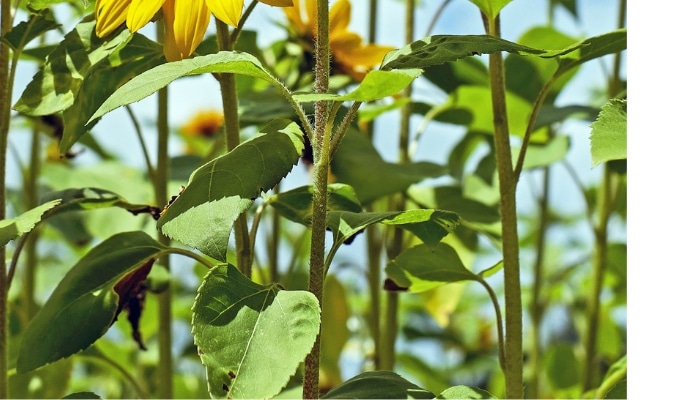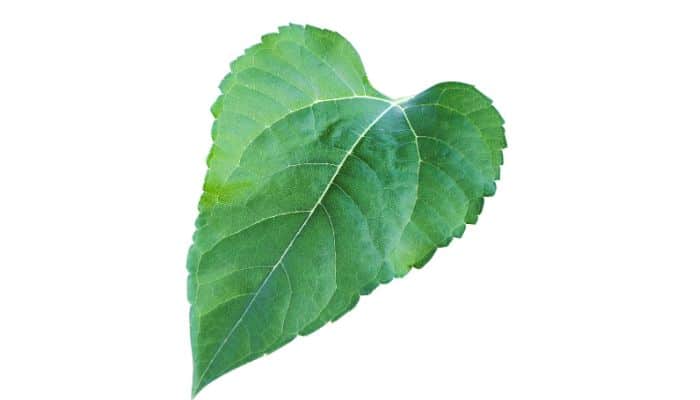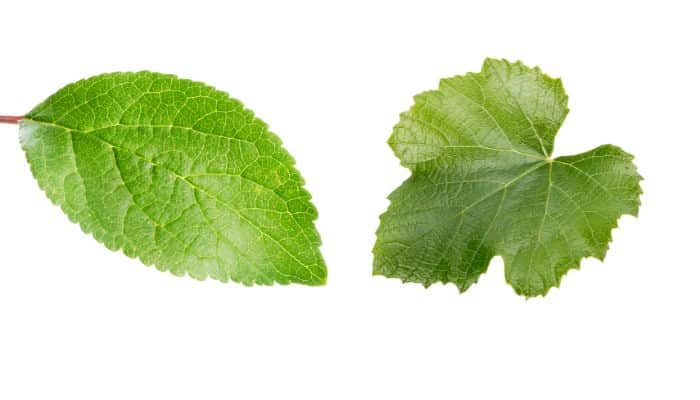Sunflower leaves are typically large, and green, and have a unique shape with a rough texture. In addition to absorbing sunlight, these leaves play a crucial role in photosynthesis, converting carbon dioxide and water into energy-rich sugars.
Sunflower leaves also contribute to the plant’s structural support and provide a natural defense against pests and diseases. Overall, sunflower leaves are essential for the growth and survival of the sunflower plant.
Read more:
If you’ve ever marveled at the stunning beauty of a sunflower field in full bloom, you may have wondered about the distinctive leaves of these iconic plants. In this article, we’re going to delve into everything you need to know about sunflower leaves.

Sunflower leaves, known for their large size and rough texture, play a crucial role in the life cycle of the plant. These typically heart-shaped or oval leaves not only add to the sunflower’s aesthetic appeal but also hold some surprising secrets that you might find fascinating. So, let’s begin our journey into the world of sunflower leaves.
“Sunflower leaves, with their vibrant green hue and distinct shape, are an integral part of the plant’s health and growth. They not only contribute to photosynthesis but also offer a habitat for beneficial insects.”
Before we delve deeper, let’s take a look at the key characteristics of sunflower leaves:
- Size: Sunflower leaves can be surprisingly large, often spanning up to 30 cm in width.
- Shape: They are typically heart-shaped or oval, with a pointed tip and serrated edges.
- Texture: The leaves have a rough texture, with a hairy surface that helps in water retention.
- Color: They exhibit a vibrant green color that turns yellow as the plant matures.
- Arrangement: Sunflower leaves are alternately arranged on the stem, which maximizes sun exposure.
With this basic understanding, we’re now ready to explore the various aspects of sunflower leaves in detail. Keep reading to learn more about their role, benefits, and uses.

Roles of Sunflower Leaves
Sunflower leaves play several important roles that go beyond what you might initially perceive. Let’s take a closer look.
- Photosynthesis: Just like other green plants, sunflowers use their leaves for photosynthesis. This process allows them to convert sunlight, water, and carbon dioxide into oxygen and glucose. The latter provides essential energy for the plant’s growth and development.
- Shade and Shelter: The broad, heart-shaped sunflower leaves provide shade for the lower part of the plant, which helps retain moisture in the soil. They also serve as a shelter for a variety of insects and small creatures.
- Indicator of Plant Health: The state of a sunflower’s leaves can give you a clear indication of the plant’s health. Healthy leaves are usually bright green and sturdy, while yellowing or wilting leaves may suggest a need for more water or a potential disease.

Benefits of Sunflower Leaves
Did you know that sunflower leaves have a range of benefits not only for the plant but also for humans and other animals? Here are some noteworthy benefits.
- Nutritional Value: Sunflower leaves are nutritious. They are rich in vitamins and minerals and can be consumed in salads or as cooked greens.
- Medical Uses: They have been used traditionally for medical purposes. Some cultures use sunflower leaves to treat fever, lung ailments, and diarrhea among other health conditions.
- Environmental Benefits: Sunflower plants, including their leaves, act as bio-remediators. They can absorb harmful toxins from the soil, improving its quality over time.
Uses of Sunflower Leaves
Apart from the aforementioned benefits, sunflower leaves have several practical uses. Here’s what you can do with them.
Sunflower leaves can be used for decorative purposes, in culinary recipes, or even as natural dyes. The possibilities are numerous and limited only by your creativity.
So, next time you admire a sunflower, don’t forget to pay some attention to its leaves. They’re more than just an attractive backdrop to the beautiful yellow bloom – they’re functional, beneficial, and versatile, playing a significant role in the plant’s survival and offering a myriad of uses for us humans.

Roles of Sunflower Leaves
Ever wondered what the sunflower leaves do? To start with, the leaves of a sunflower, like those of other plants, play a critical role in photosynthesis. This is the process where sunlight, water, and carbon dioxide are converted into food for the plant. The sunflower leaves are broad and large, enabling them to capture as much sunlight as possible.
Additionally, sunflower leaves exhibit a fascinating behavior known as heliotropism, or sun tracking. During the day, the leaves move to face the sun to maximize the amount of light they receive. This ensures that the plant has ample energy for growth and development.
But that’s not all! Sunflower leaves also serve a defensive role. Their coarse texture and hairy surface deter many pests and insects, helping to protect the plant from damage. In essence, the leaves of a sunflower perform a vital function in the life of the plant, contributing to both its survival and growth.

Roles of Sunflower Leaves
Sunflower leaves play an important role in the life of the sunflower plant. These large, broad leaves serve a few essential functions that are crucial to the plant’s survival.
- Photosynthesis: Like all green parts of a plant, sunflower leaves are involved in photosynthesis. This process allows the plant to convert sunlight, carbon dioxide, and water into sugars, which provide the energy it needs to grow.
- Transpiration: Sunflower leaves also participate in transpiration, a process where water is lost from the plant in the form of vapor. This helps the plant regulate its temperature and distribute nutrients.
- Protection: The large size and slightly rough texture of sunflower leaves provide a degree of protection to the plant, deterring many types of pests and herbivores.
Benefits of Sunflower Leaves
Aside from their role in the life of the sunflower plant, sunflower leaves also offer a range of benefits to us humans.
- Nutritional Benefits: Sunflower leaves are high in vitamins A, C, and E, as well as iron and potassium. They’re a great addition to a healthy diet.
- Medicinal Benefits: Traditionally, sunflower leaves have been used in herbal medicine to treat several conditions, including bronchial, laryngeal, and pulmonary ailments, coughs, and colds.
- Cosmetic Benefits: Sunflower leaves contain antioxidants that can help fight skin aging. They can be used in the creation of skincare products.
Uses of Sunflower Leaves
Wondering how you might incorporate sunflower leaves into your day-to-day life? Here are a few suggestions.
- Cooking: Sunflower leaves can be eaten when they’re young and tender. They’re often used in salads, stir-fries, and soups.
- Tea: You can brew tea from dried sunflower leaves. This herbal tea is said to have a relaxing effect.
- Crafts: The unique shape and size of sunflower leaves make them a fun material for a variety of crafts. They can be used in collages, leaf prints, and more.
Did you know that sunflower leaves can be utilized in a variety of ways? The versatility of these leaves extends far beyond their innate beauty and decorative appeal. Whether you’re a culinary enthusiast, tea lover, or a fan of natural home decor, sunflower leaves have something to offer.
1. Culinary Uses
Sunflower leaves can be used in a myriad of culinary applications. Here’s how:
- Fresh Salads: Young, tender sunflower leaves can be added to salads for a delightful crunch and a slightly nutty flavor.
- Stir-fries: Mature leaves, on the other hand, can be used in stir-fries, much like spinach or kale.
- Herbal Teas: Sunflower leaves can also be dried and used to brew a calming herbal tea.

2. Decorative Uses
With their broad surface and striking veins, sunflower leaves can make a unique addition to your home decor. Here are some ideas:
- Use them as natural placemats for a garden-themed dinner party.
- Create a stunning leafy backdrop for your indoor plants.
- Frame a pressed sunflower leaf for a touch of botanical art.
Note: Before using sunflower leaves in any of these ways, ensure they are thoroughly cleaned and free from any pesticides or harmful insects.
3. Sunflower Leaf Designs
| Design Type |
|---|
Frequently Asked Questions For Sunflower Leaves
What Causes Sunflower Leaves To Turn Yellow?
Sunflower leaves can turn yellow due to nutrient deficiencies, overwatering, pests, or diseases.
How Often Should Sunflower Leaves Be Watered?
Sunflower leaves should be watered deeply once a week, ensuring the soil is moist but not waterlogged.
What Are The Common Pests That Attack Sunflower Leaves?
Common pests that can attack sunflower leaves include aphids, caterpillars, snails, and slugs.
How Can I Prevent Fungal Diseases On Sunflower Leaves?
To prevent fungal diseases on sunflower leaves, ensure proper air circulation, avoid overhead watering, and remove any infected leaves.
Can I Eat Sunflower Leaves?
While sunflower leaves are edible, they are often bitter and tough, making them less desirable for consumption.

last talks
Sunflower leaves play a vital role in the growth and development of these vibrant plants. From providing energy through photosynthesis to regulating the plant’s water balance, these leaves are a crucial component of a sunflower’s overall health. Moreover, the distinct shape and pattern of the leaves help to maximize sunlight capture and ensure efficient energy conversion.

Additionally, the leaves serve as a natural defense mechanism, protecting the plant from pests and diseases. Understanding the importance of sunflower leaves can aid in the cultivation of healthy sunflower plants and enhance their aesthetic appeal in gardens and landscapes.
So, next time you marvel at the majestic beauty of a sunflower, remember to appreciate the significance of its leaves in sustaining its growth and bringing joy to our surroundings.









